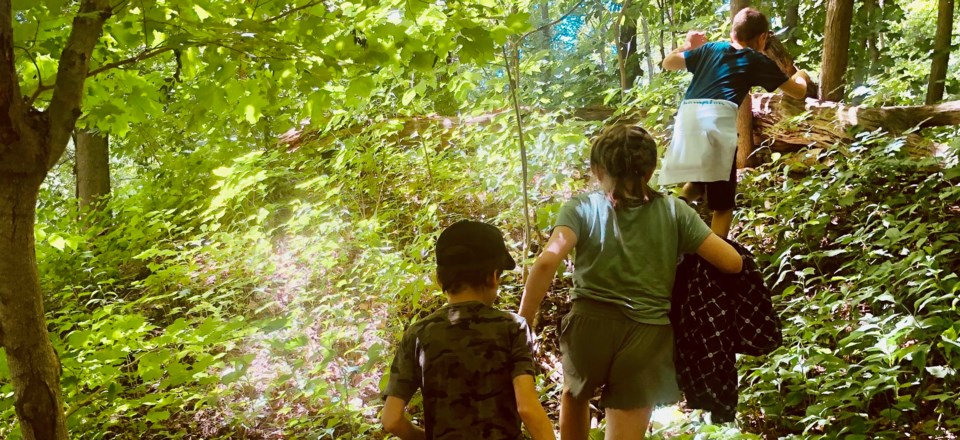Aside from my local outdoor adventure company, I also work full time for the District School Board of Niagara.
The school board job allows me to quietly observe patterns in youth behaviours that seem to correlate with their neighbourhoods. On their field trips, we have been using the same forests and offering the same programs over the years. With these consistent background variables, it gives me and my coworkers an opportunity to analyze how kids interact with nature, and what it might tell us about their communities.
Niagara Region is a mosaic of urban and rural environments, as well as appreciable gaps in economics and income. The lifestyles and communities that exist on our peninsula of nearly half a million people are remarkably diverse. To me, this is also what makes Niagara such a special place to live, work and play.
In a 15-minute drive, you can go from a true inner city environment to sprawling farmlands and big properties. Driving from south to north end Niagara Falls feels like an endless concrete jungle, yet a cruise out in Wainfleet or West Lincoln offers glimpses into true agricultural living. Fort Erie contrasts some of Niagara’s most heavily-forested areas with dense residential spots. We have a little bit of everything, and it is changing fast.
Fascinatingly, this all comes to light when we run programming at the school board. The contrasts are wilder than any woods we have left in Niagara.
We see kids who are uncomfortable touching mud and kids we can’t keep out of it. We have kids who are totally gassed after hiking up the escarpment to kids who could run up and down it all day. Some students hunt with their parents, while others are on the hunt for their next ‘like’ on TikTok. Some kids can take a bonk on the head, and others openly admit they are scared to enter the forest at Woodend Conservation Area.
My coworkers and I have had students express that they have never been in a forest before, despite growing up in Niagara. Others ask if we have black bears in the woods, and sometimes these are students who are old enough to have a job.
During our popular storm shelter building program, some kids haven’t yet grasped that you can’t necessarily lean a tall skinny stick against a tall skinny tree and expect it to be stable. Other students the same age build structures so intricate and cleverly engineered that they are hard for me to take down at the end of the day. Some students don’t grasp that if you sprint through mud in clunky boots, you will soon be eating the mud, while others know how to build bridges over it.
We also see interesting psychological patterns involving resilience, manners, listening skills, and general attitudes which can vary according to where students come from. I used to notice these patterns playing sports across Niagara in my youth, too.
However, the moment the students step off the bus, I put my analyses to the side. Every student and every class is going to obtain something valuable from this day, regardless of their upbringing, home life, or community they come from. Some are going to grow and learn something new about themselves and their big backyard. Others get a chance to exercise their strengths and comforts outside of the pent-up classroom routine.
This variation in relationship styles with the outdoors is reflective of Niagara’s demographic diversity, and truly highlights the microcosms of lifestyles that exist across the region. Although this diversity is something to celebrate, I would also like to see more inner city lives healthily changed by nature exposure with their friends, family, and classmates alike.
